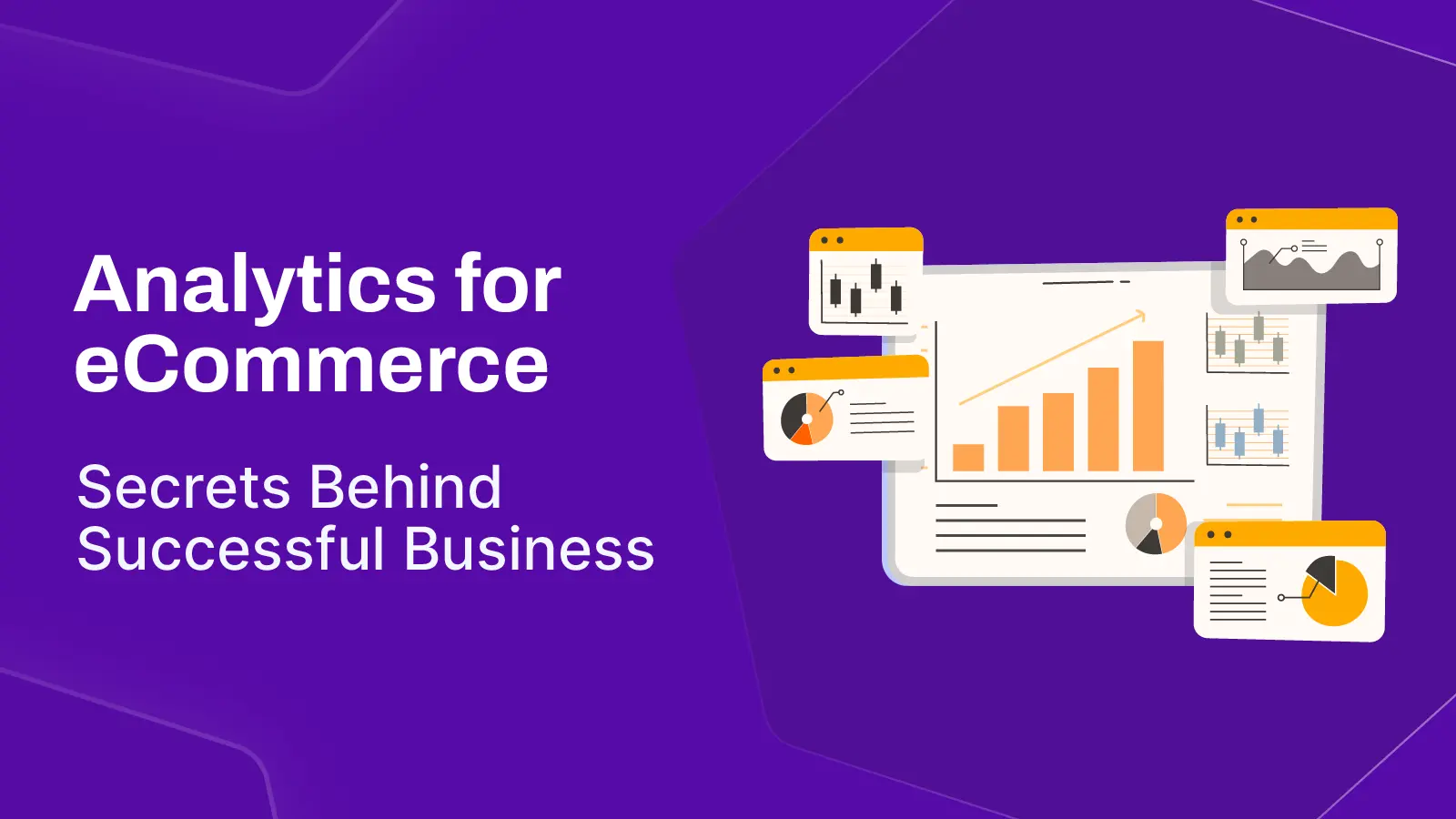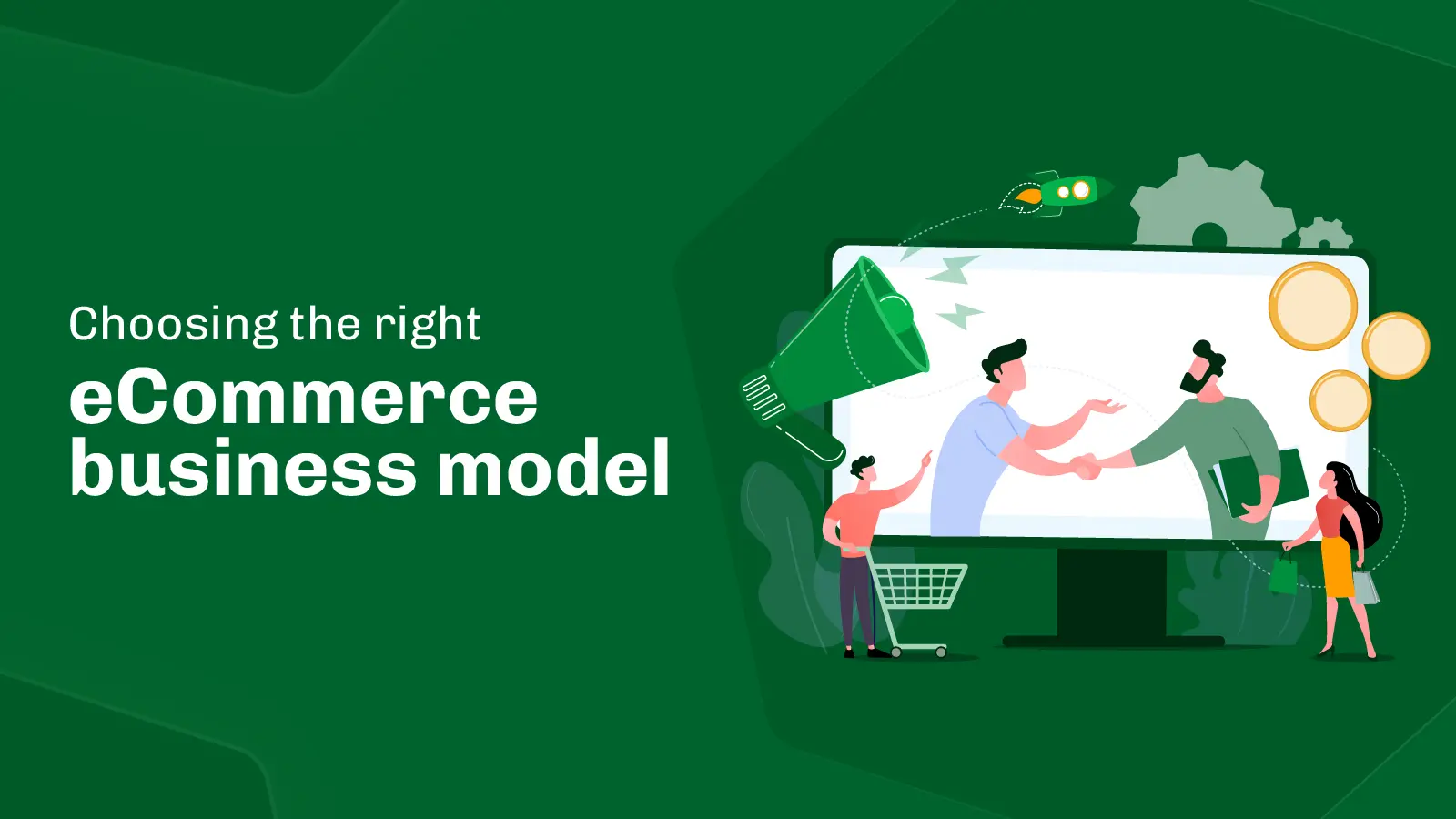Starting your own eCommerce business is thrilling, especially if you’ve always wanted to be your own boss. If you are creative or desire to sell, starting your own business might be an excellent choice for you.
It takes a lot of effort to get a business off the ground. To take the essential steps to put your concept out there, you must know business, creativity, and discipline; nevertheless may be a very valuable and rewarding journey. Global eCommerce sales reached approximately $5.7 trillion in 2022 and are expected to reach $6.3 trillion in 2023, with eCommerce accounting for 14.8% of total sales.
However, getting started can seem daunting, especially for those without prior experience in eCommerce.
In this guide, we’ll provide a step-by-step overview of how to start an eCommerce business, covering everything from choosing a niche and developing a business plan to building your website and promoting your products.
Whether you’re a seasoned entrepreneur or a first-time business owner, this guide will provide the essential information you need to launch and grow your eCommerce business successfully.
What is an eCommerce Business?
An eCommerce business is a type of business model that allows companies to conduct transactions, sales, and other business activities online. It involves buying and selling products and services over the Internet without the need for a physical storefront or location.
eCommerce businesses have become increasingly popular due to the rise of technology and the convenience and flexibility they offer consumers. With an eCommerce business, customers can shop from anywhere and at any time, making it an attractive option for both consumers and businesses.
Why should You Start an eCommerce Business?
eCommerce is an excellent industry to get into, especially today, whether you’re a bootstrapper or an investor with some spare cash to start a new business. Even if you are new to eCommerce, the tools and resources are all set out for you. All you need is a strong work ethic and an ambition to achieve.
Here are the reasons to start an eCommerce business today:
Flexibility
eCommerce businesses offer the flexibility to work from anywhere and at any time, which can be appealing to you a flexible lifestyle.
Low Startup Costs
Starting an eCommerce business typically requires lower startup costs than a traditional brick-and-mortar business. It is because you don’t need a physical storefront, which can be expensive to rent or purchase.
Wide Audience Reach
eCommerce businesses have the potential to reach a wider audience than traditional ones since geographical boundaries do not limit them.
Convenience
Customers can shop online from the comfort of their own homes at any time of day, which is a major selling point for eCommerce businesses.
Niche Markets
With eCommerce businesses, you can cater to specific niche markets where traditional businesses may not serve well.
Scalability
eCommerce businesses have the potential to scale quickly and efficiently since there are no physical limitations to expansion.
Overall, starting an eCommerce business can be a rewarding and profitable venture for you to put in the effort and time required to make it successful.
How to Start an eCommerce Business
Since anyone can use digital marketing for their business, you’ll need to think about how to stand distinct as eCommerce continues to grow. Despite the competition, eCommerce companies have a promising future.
Here is how you can kick start your business following these simple steps:
1. Research and Choose Your eCommerce Business Niche
The first step to starting an eCommerce business is choosing a product to market. It can be a daunting task, but it’s important to choose a product you’re passionate about and think will have a good impact on the market.
There are a few things to keep in mind when choosing a product to market:
Demand
Is there a demand for the product you want to sell? You can research this by looking at online sales data, talking to potential customers, and conducting market research.
Competition
How much competition is there in the market for the product you want to sell? You’ll need to find a way to differentiate your product from the competition.
Profitability
Can you make a profit selling the product? When calculating your profit margin, you’ll need to factor in the cost of goods sold, shipping, and other expenses.
Once you’ve chosen a product to market, it’s time to start developing your business model & plan.
2. Choose a Business Model
In today’s highly competitive and expansive eCommerce industry, it’s crucial to carefully contemplate and determine the most suitable business model for your eCommerce venture.
Business-to-Customer (B2C)
In this type of eCommerce business, businesses sell their products or services directly to individual consumers. These business types are typically known as Single-vendor and Multi-vendor businesses.
Let’s see some differences between Single and Multi-vendor eCommerce platforms:
| Single-vendor | Multi-vendor |
| Only one seller sells products or services | Multiple sellers offer products or services |
| The seller has complete control over their store and the products they offer | The platform owner has control over the products and services offered by the sellers |
| Customers are limited to the products offered by a single seller | Customers have access to a wider variety of products from multiple sellers |
| Examples include Apple and Nike | Examples include Amazon, eBay and Alibaba |
Business-to-Business (B2B)
This type of eCommerce business involves selling products or services to other businesses or organizations.
Customer-to-Customer (C2C)
This model enables individuals to sell products they no longer need or want, and others can purchase those products at a reduced price. C2C platforms like eBay and Etsy have gained immense popularity in recent years, providing a flexible and accessible way for individuals to engage in commerce.
The C2C model has low barriers to entry and can be an excellent way for individuals to generate income or start their own small businesses without significant investment or overhead costs.
Customer-to-Cusiness (C2B)
In this type of eCommerce business, individuals sell products or services to businesses or organizations, usually through freelance or consulting work.
Business-to-Business-to-Customer (B2B2C)
In this model, the business in the middle serves as an intermediary, facilitating the distribution of products or services from the original business to end consumers. This intermediary business may add value by providing marketing and promotional activities, distribution and logistics, customer service, or other support functions.
Now it’s time to write a business plan while you have done choosing your business model.
3. Write a Business Plan
After you’ve set the groundwork for your company, you’re ready to create a business plan. This written document outlines your financial, operational, and marketing goals and strategies. It can help you become organized and attract possible investors.
Here are some key points you need to include in a business plan:
Executive summary: This section should provide a brief overview of the business, including its mission statement, products or services, target market, and competitive advantage.
Market analysis: This section should include an analysis of the industry and market, including target customer demographics, trends, and competition.
Products and services: Describe the products or services your business offers, their features and benefits, and how they address customer needs.
Marketing and sales strategy: Outline your strategy for promoting and selling your products or services, including advertising, promotions, social media, and other channels.
Management and personnel: Describe the organizational structure of the business, the key personnel involved, and their roles and responsibilities.
Choose your sales channel: Consider sales channels where potential customers are already browsing to expand your customer base. The ideal combination of sales channels depends on your unique product offering and target audience.
Financial projections: This section should include projected revenue, expenses, and profits over a specific period, typically three to five years. It should also include a break-even analysis, cash flow projections, and other financial metrics.
Funding requirements: If you require funding to start or grow your business, outline the necessary amount of funding, the sources of funding you plan to pursue, and how you plan to use the funds.
Appendix: This section should include additional information that supports the business plan, such as resumes of key personnel, marketing materials, and financial statements.
Remember that a business plan is a living document that can be revised and updated as your business grows and evolves. It’s a roadmap for your business and can help you stay on track and make informed decisions.
4. Source Products
Next, you’ll need to source products to sell. If you’re selling physical products, you might have to build them or collaborate with a manufacturer.
Are you planning to buy in bulk and have inventory on hand? Will you use dropshipping, where things are created or obtained when the purchase is placed?
Dropshipping can be an effective way for a new eCommerce business owner to reduce costs in several ways. Firstly, with dropshipping, you don’t need to keep inventory in stock, so you don’t need to spend money upfront on buying products to sell. Instead, the products are shipped directly from the supplier to the customer, cutting out the need for warehousing and storage costs.
However, if you own a small business and products are manufactured by you, there is no need to rely on product sourcing. You can be on your own.
If you’re offering professional services, you may only need to describe and list what you have to offer on your company website. However, it will be necessary to determine the appropriate pricing and establish the number of clients that can be accommodated daily or weekly.
5. Figure Out Order Fulfillment
The process of delivering customers’ purchases to their doorstep is known as order fulfillment. Most eCommerce website creators provide shipping label printing as the first step in the fulfillment process, with some offering the option to include shipping costs in customers’ orders during checkout.
It’s important to research shipping rates to get an idea of the costs involved if you decide to manage order fulfillment yourself. Many eCommerce businesses use automation software or third-party logistics providers to streamline the order fulfillment process. These tools can help businesses manage their inventory, process orders efficiently, and handle shipping and returns.
Additionally, it’s important to note that your eCommerce customers may be located worldwide. If you have any restrictions on shipping to certain areas, be sure to indicate that clearly on your website.
6. Create an eCommerce Business Website
Your company requires a name and a distinct brand identity next. It is extremely important to your company’s success if you are beginning a white-label eCommerce business.
Choose a Business Name
Apart from identifying a product to sell online, choosing an appropriate and available business or brand name, along with a matching domain name, can also pose a significant challenge.
Take your time, think of a name that isn’t taken by any organization or anyone, and get a domain name on it.
Create a Logo
It’s time to create a straightforward logo after choosing a memorable name and registering a related domain.
Build Your Website
Next, you need to develop a website where you’ll sell your products. It has to be visually attractive so that everyone likes it, responsive so that it works flawlessly on every device, and perfectly working.
Here are the steps to build a website:
UI & UX Theme
The design flow of an eCommerce business website typically starts with the UI/UX design process. This involves creating wireframes and prototypes that outline the layout and functionality of the website.
Once the UI/UX design is finalized, the next step is to move on to the visual design phase. This involves creating the look and feel of the website, including the theme, color scheme, typography, and images.
Development
After the visual (UI) design is completed, the development phase begins. This stage involves coding the website and implementing all features.
Here are some important tasks that are typically involved in the development phase:
- Front-end development: This phase involves creating the user interface and designing the website’s layout using the UI design. Various scripting & programming languages are used in front-end development, such as HTML, CSS, JavaScript, React, Angular, Bootstrap, etc.
- Back-end development: This phase involves setting up the server-side infrastructure and programming the logic that powers the website’s features. This includes developing a shopping cart system, payment processing, inventory management, etc. Some popular back-end development languages are Java, Python, PHP, JavaScript, etc.
- Database development: This involves setting up a database to store all the website’s information, including product information, customer data, and order information.
Quality Testing
Once the development is complete, the website is tested for functionality, and any bugs or errors are fixed. Finally, the website is ready to be launched and made live to the public.
Develop an App (Optional)
You can develop an app so that users can interact with your business easily. It is an optional but effective move for any eCommerce business.
CMS (Content Management System)
The steps I’ve discussed above are time-consuming and require lots of effort. If you aren’t into any of these, plenty of CMSs (Content Management System) are available in the market. These are pre-built solutions that come with a complete eCommerce business module.
However, getting a robust CMS solution with proper after-sales services is challenging. 6Valley is one of those CMSs that comes with a complete eCommerce solution. It comes with app support so that your business can grow even bigger and faster.
7. Promote and Market Your Business
When your website is ready with products you want to sell, it’s time to start serving the customers. However, for that to happen, potential customers need to be able to find your products on your website. That’s why marketing is important.
Here are some marketing strategies that you can apply to your eCommerce business:
- Search Engine Optimization (SEO)
Optimize your website for search engines to improve its visibility in SERP and attract more traffic.
- Pay-per-click (PPC) Advertising
Use platforms like Google Ads or social media ads to target specific audiences and drive traffic to your website.
- Social Media Marketing
Use social media platforms to engage with customers, promote products, and increase brand awareness.
- Email Marketing
Build an email list and send targeted emails to subscribers to promote sales and special offers.
- Influencer Marketing
Partner with influencers in your niche to promote your products to their followers.
- Content Marketing
Create valuable content like blog posts, videos, and infographics to attract potential customers and increase your authority in your industry.
- Referral Marketing
Encourage satisfied customers to refer their friends and family to your business with referral programs or discounts.
By implementing these marketing strategies, you can promote your eCommerce business effectively and attract more customers. Remember to constantly analyze and adjust your marketing tactics to ensure you are maximizing your efforts and achieving your business goals.
8. Monitor & Adapt
Starting an eCommerce business is an ongoing process, and it’s important to monitor your sales, customer feedback, and market trends to stay ahead of the competition. Use analytics tools to track your website traffic and conversion rates and adapt your strategy as needed.
Starting an eCommerce business requires time, effort, and dedication, but the potential rewards are well worth it. Following these key steps, you can launch a successful online store and build your own eCommerce empire.
Quick Tips for Running an eCommerce Business
Starting an online store can be a thrilling experience, whether it’s your first or a subsequent venture. To ensure your success, here are some valuable tips to consider:
Start Simple
Consider starting with a low-overhead website if you are unsure about taking the eCommerce path. Begin with a free version of an eCommerce website builder, selling only a small amount of inventory or a few types of products.
By starting small, you can minimize your startup costs and make it easier to pivot if your initial idea doesn’t take off. As your business gains traction, you can upgrade to a more comprehensive eCommerce platform and broaden your product line.
Grow a Loyal Customer Base
Attracting and retaining customers is key to the success of your eCommerce business. To achieve this, you need to build a loyal customer base that purchases your products and promotes them to others. Creating a strong brand presence on social media platforms can help you establish a following.
However, it’s important to gather customer information, which can enable you to market to them directly. This may involve implementing an email marketing campaign, sending discount codes via text message, or informing them of events in their region where they can find your products.
The more information you have about your customers, the better you can tailor your marketing efforts to their needs and preferences.
Don’t Focus on the Profitability of the First Year
Building a successful eCommerce business requires patience and persistence, and it’s important to approach it as a long-term strive rather than a quick win. It’s unrealistic to expect your business to be profitable immediately, so don’t measure your success solely on early profits.
Allow yourself 1.5 to 2 years at least to establish and grow your business. Use this time to test and refine your strategies, continually improving your product offerings and investing in your business using the budget guidelines mentioned earlier. Remember, building a successful eCommerce business is a marathon, not a sprint.
Sell In-demand Products
One of the keys to a successful eCommerce business is selling an in-demand product. Conducting market research and identifying trends can help you find products that are currently popular or have the potential to become popular.
Consider selling products that are unique, solve a problem, or cater to a specific niche market. Also, choose products with a healthy profit margin to ensure your business is financially sustainable. By selling an in-demand product, you increase your chances of attracting customers and generating sales.
A/B Testing with Marketing & Advertising
After launching your eCommerce business, it’s crucial to spread the word about your brand. You must experiment with various marketing strategies to identify the platforms where your target audience is most active and responds positively to your content.
Test out a range of online marketing tactics such as affiliate marketing, Instagram ads, website pop-ups, checkout upsells and cross-sells, organic search, content marketing, and loyalty programs to see what works best for your business.
Invest in Link Building
Investing in link building can be a powerful way to improve your eCommerce website’s search engine optimization (SEO) and drive more traffic to your online store. Link building involves acquiring links from other websites to your own, which search engines view as a vote of confidence in your website’s authority and relevance.
To effectively build links, focus on creating high-quality content, reaching out to relevant websites and influencers, and building relationships with other businesses in your industry. Consider working with a professional link-building service to help you achieve your SEO goals.
Take Advantage of Partnerships & Multi-channel Strategies
Although selling products directly to consumers is a common practice, showcasing them on major online retailers such as Amazon, Flipkart, and Daraz can aid in boosting brand visibility and sales.
Additionally, social media partnerships through influencer and affiliate marketing, as well as public relations efforts such as features in select publications, can also be effective ways to gain traction and get noticed by potential customers.
Wrapping Up
Starting an eCommerce business can be thrilling and frightening as you navigate through various challenges to establish a successful online business. From choosing the right product, and developing an eCommerce website, to marketing and selling to new customers, it can feel like an intricate puzzle.
With the help of the above resource, you can chart a clearer path to success. Remember, taking action and enjoying the journey is the key to success.
However, why spend your valuable time on technical tasks when there’s a smarter way to build an eCommerce website? With a CMS like 6Valley, you can get a pre-built eCommerce solution that’s easy to set up and works like plug-and-play. Say goodbye to the technical complexities of building a website and focus on what really matters – growing your business and reaching more customers.
Thanks for reading this article. If you have any questions regarding this topic, feel free to share them in the comment section.
Peace!
















